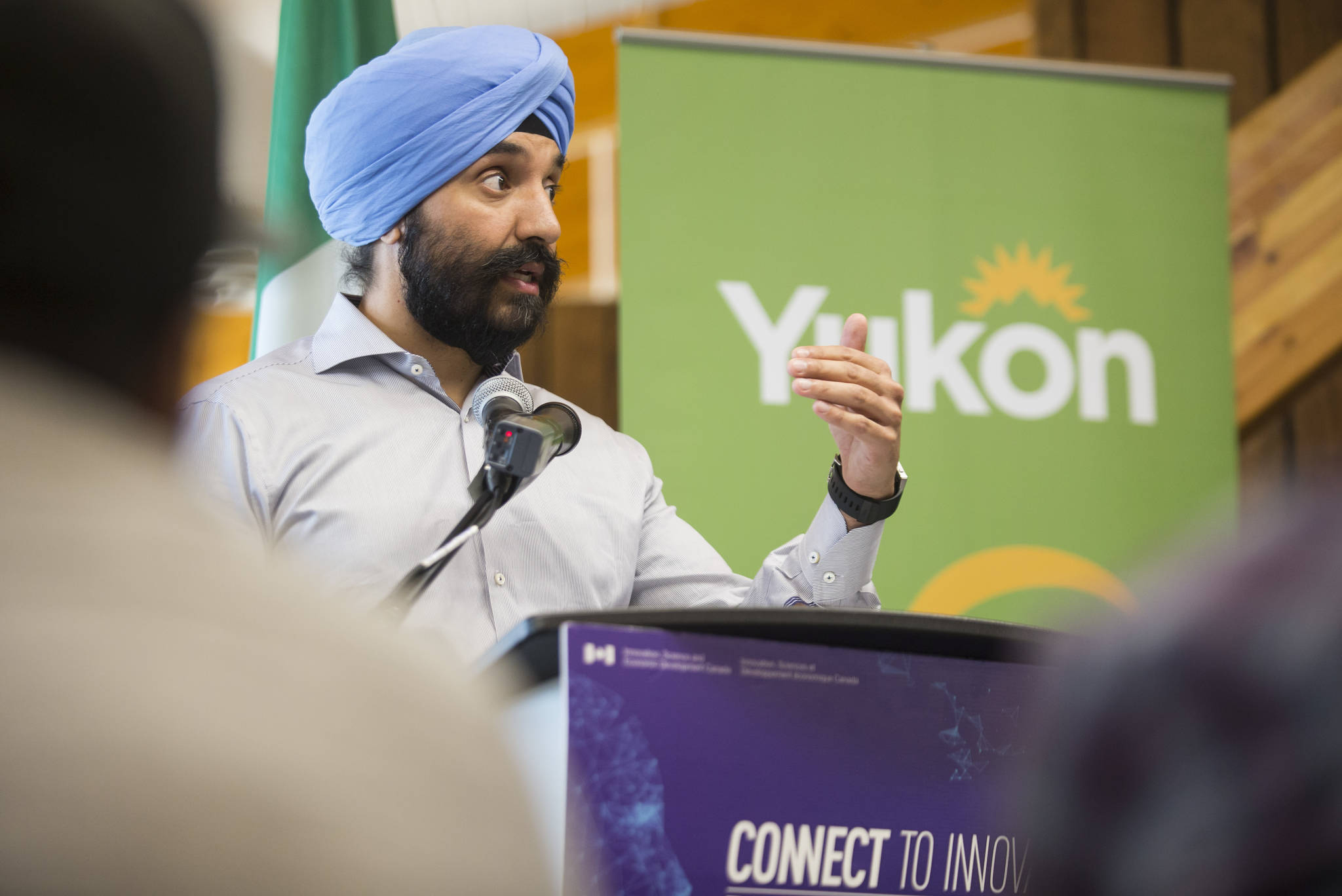This article has been updated to include comment from Alaska Power and Telephone.
The Yukon government will not build a cross-border fiber-optic link connecting Alaska over land, it announced Wednesday.
In a ceremony at Yukon College in Whitehorse, Deputy Premier Ranj Pillai said the provincial government has instead elected to work with the Canadian federal government and telecommunications firm Northwestel to build a new fiber-optic cable north from Whitehorse to Inuvik, Northwest Territories. There, the new 483-mile cable will connect with a similar fiber line built to serve the Northwest Territories.
“We’ve chosen the all-Canadian northern loop,” Pillai said.
Navdeep Bains, Canadian Minister of Innovation, Science and Economic Development, flew to the Yukon for Wednesday’s ceremony. The Canadian federal government is paying most of the cost of the cable.
The $79 million (Canadian dollars) cable is being built to serve as an alternative path for internet and phone service for the Yukon, which has only a single cable that runs along the Alaska Highway. That cable has been severed on a frequent basis by disaster and accident, leading to demand for a redundant route.
In picking the northern route, which will follow the route of the Dempster Highway, the Yukon rejected a much shorter alternative between Whitehorse and Skagway. That route would have created the first overland fiber-optic connection between Alaska and Canada. Currently, Alaska’s only fiber-optic telecommunications links to the Outside run through a handful of undersea cables that come ashore in Washington state and Oregon.
Those cables have been disrupted by undersea earthquakes in the past, cutting Alaskans off from ordinary phone and internet service. A Whitehorse-Skagway link would have created a backup route for Alaskans as well as Yukoners.
An alternative cable has been proposed to connect Alaska to the rest of the world through the Arctic Ocean, but the former CEO of Quintillion Alaska was arrested in April on charges related to “a multimillion-dollar fraud scheme” related to the project.
The overland portion of the project is now being scrutinized for violating permits related to digging through permafrost.
Speaking about the Yukon’s project, Pillai said the “all-Canadian” route “more throughly mitigates the operating risks.”
Among those is security, he said.
“It eliminates the security risks of transferring data through a foreign country,” he said, referring to the United States.
A Northwestel representative promised that the line would be designed by Canadian engineers and maintained by northern Canadians.
The selection of the northern route is a blow to Alaska Power and Telephone, which had been backing the Whitehorse-Skagway connection. In 2016, AP&T completed a new fiber-optic cable between Juneau and Haines, with an extension to Skagway.
That $11 million cable was designed to serve both northern Lynn Canal and the Yukon, but without an overland link to Whitehorse, it will be used at only a fraction of its capacity.
“The primary function of AP&T’s Lynn Canal Fiber is to provide quality high-speed connectivity to Alaskans in the communities of Haines and Skagway,” said AP&T President and CEO Michael Garrett in a prepared statement provided to the Empire. “Of secondary consideration was the opportunity to offer our neighbors to the north, a cost-effective redundant fiber link to assist in strengthening their digital needs going forward. While today’s decision from the Government of Yukon may not have been what we had hoped to hear, AP&T is committed to keeping the gateway of opportunity open for business in terms of Alaska/Canada connectivity.”
• Contact reporter James Brooks at jbrooks@juneauempire.com or 523-2258.

